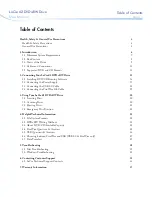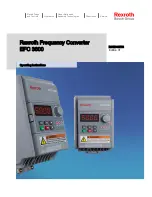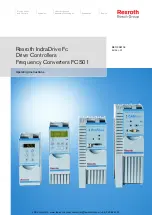
5 Parameter
BU 0200 en-US-4920
197
Pos : 525 /Anleit ungen/El ektr onik /FU und St art er/5. Par ameter/ Par ameter auflist ung (P000 .. .)/P500- P599/Param et er P525... P529 – Lastüberwac hung @ 0\m od_1328093390150_14638. docx @ 15070 @ @ 1
P525 … P529
Load control
With the load monitoring, a range can be specified within which the load torque may change
depending on the output frequency. There are three auxiliary values for the maximum permissible
torque and three auxiliary values for the minimum permissible torque. A frequency is assigned to
each of these auxiliary values. No monitoring is carried out below the first and above the third
frequency. In addition, the monitoring can be deactivated for minimum and maximum values.
As standard, monitoring is deactivated.
The time after which a fault is triggered can be set with parameter (P528). If the permissible
range is exceeded
(Example diagram: Infringement of the area marked in yellow or green
), the
error message
E12.5
is generated unless parameter (P529) does not suppress the triggering of
an error.
A warning C12.5 is always given after the elapse of half of the set error triggering time (P528).
This also applies if a mode is selected for which no fault message is generated. If only a
maximum or minimum value is to be monitored, the other limit must be deactivated or must
remain deactivated. The torque current and no the calculated torque is used as the reference
value. This has the advantage that monitoring in the "non field weakened range" without servo
mode is usually more accurate. Naturally however, it cannot display more than the physical
torque in the weakened field range.
All parameters depend on parameter sets. No differentiation is made between motor and
generator torque, therefore the value of the torque is considered. As well as this, there is no
differentiation between "left" and "right" running. The monitoring is therefore independent of the
prefix of the frequency. There are four different load monitoring modes (P529).
The frequencies and the minimum and maximum values belong together within the various array
elements. The frequencies do not need to be sorted according to their magnitude in the elements
0, 1 and 2, as the variable frequency drive does this automatically.
Pos : 526 /Allgem ein/ Allgem eingültig e Module/---------Seitenumbr uc h k ompakt --------- @ 13\m od_1476369695906_0. doc x @ 2265496 @ @ 1
I
load
f
setpoint
















































